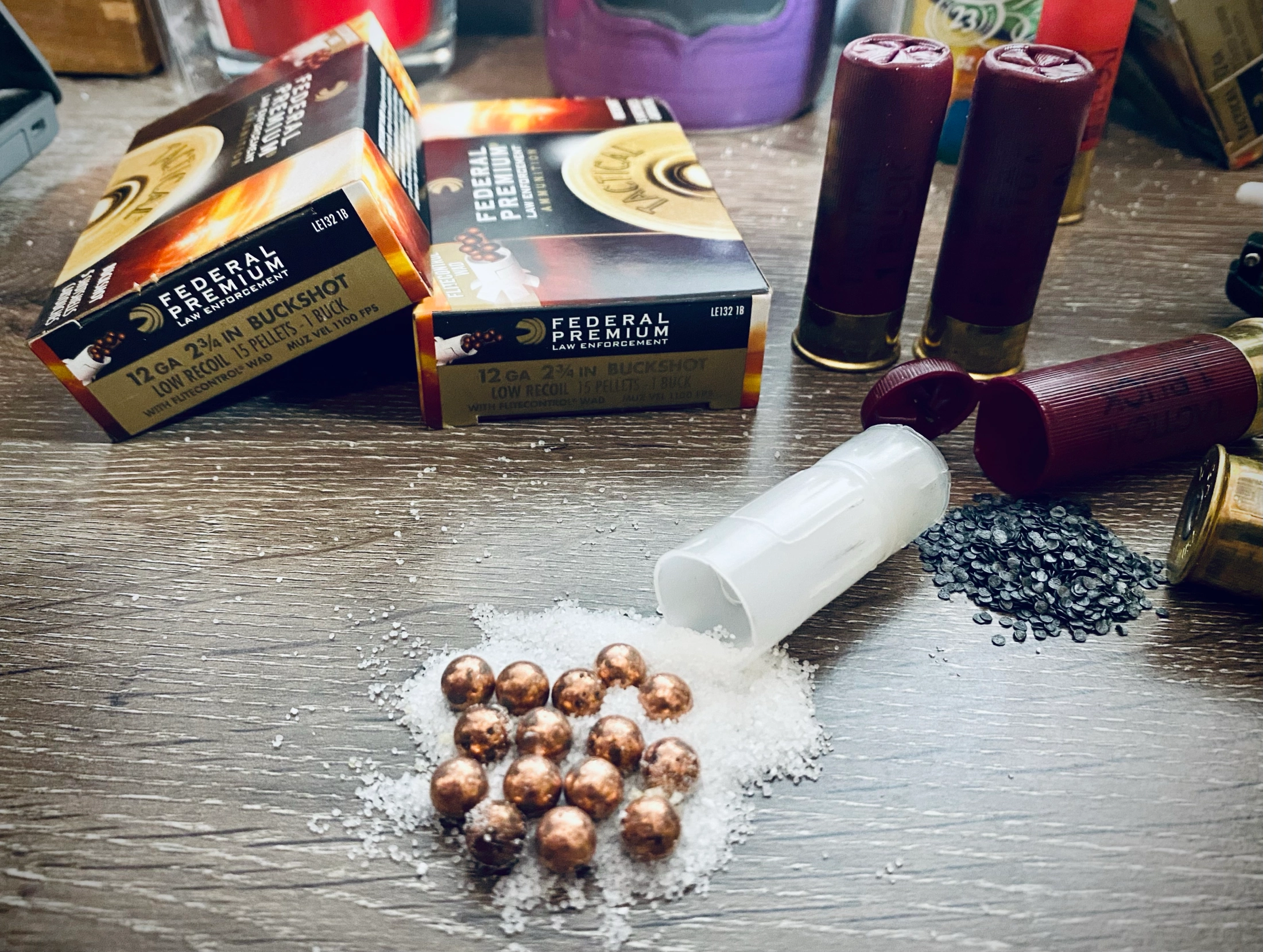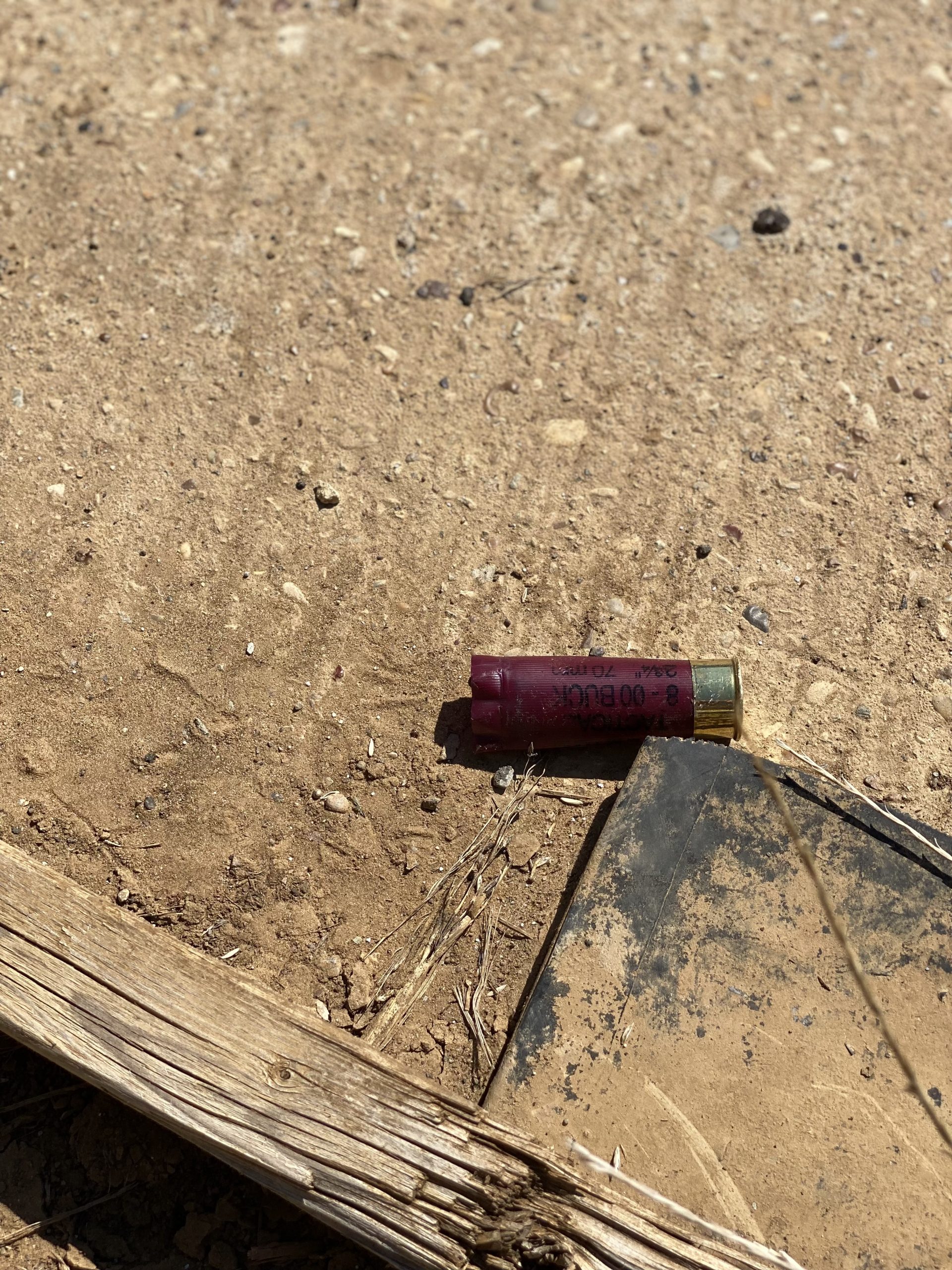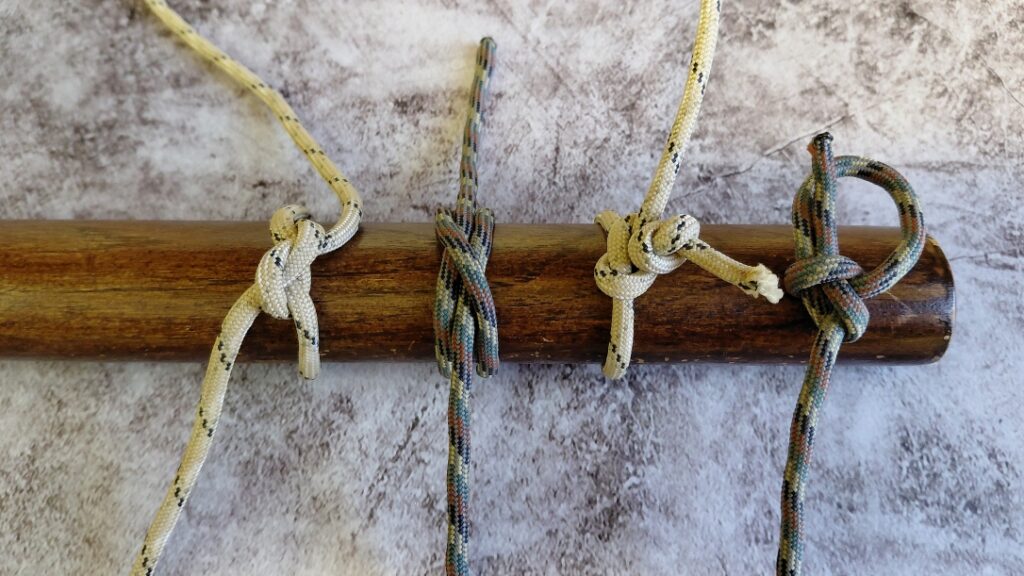This article is the second part to Shotgun Basics: Buckshot (Part 1)
Double Aught Loads (.33 caliber)
The 9 pellet double-aught buckshot (00 BK) load became the standard for 12 gauge loads because 9 “00” pellets reasonably fit in a 2.75 inch shotshell and those pellets weigh approximately 1 ⅛ ounces–a “standard” weight in the shotgun world. This is why virtually every ammunition company sells cartridges with 9 pellet loads by default. While “00” pellets nominally measure 0.33-inches, in reality they can sometimes be a tad smaller in diameter depending on the manufacturer. With the on-going defensive shotgun renaissance, 8 pellet loads are also becoming more popular. The 8 pellet load’s biggest benefit is that it provides the tightest patterns since they lack the extra pellet that always seemingly turns into the stray flyer. Besides the inherently tighter pattern from the 8 pellet load, it is easy to be more accountable downrange without the errant pellet.
The nuanced differences between fielding an 8 pellet load vs a more traditional 9-pellet load are worthy of their own separate article. Truthfully, the difference on that last pellet depends on the specific shotgun and the capacity and circumstances in which it is employed.
Advertisement — Continue Reading Below
Experience teaches me that at 25 yards, a modern shotgun that either has a high quality barrel, is jug choked or both can dump a modern double-aught buckshot payload (like any of the three different Federal Premium Flite-Control loads) inside the A and C zones of a standard IPSC cardboard target consistently–flyer or not. This is roughly an eight to nine inch spread depending on the individual gun and batch of shotshells. Shotguns have been around for a long time, but this is truly a modern shotgunning miracle. There is good reason why the Flite-Control line has its ardent devotees.
#1 Buckshot Loads (.30 caliber)
Though double-aught buckshot loads are the most commonly found and used, many defensive shotgun savants and serious shooters favor 12 gauge #1 Buckshot loads. The #1 Buckshot pellet is slightly smaller than the double-aught buck pellet (.30 cal vs .33 cal), but these pellets are still large enough to provide the necessary level of penetration while also throwing a denser pattern. Whereas a typical 12 gauge double-aught buckshot load has 8-9 pellets, the typical #1 Buckshot load has 15-16 pellets instead. The trade-off shooters have to make with #1 Buck loads is accounting for larger patterns with potentially more fliers and pellets that start to veer away from the main pattern. They will have to weigh their needs and specific defensive contexts to see if there is a benefit. Federal used to offer a #1 Buck Flite-Control load, but it has been off the market for a few years now due to inconsistencies between the smaller #1 Buck pellets and the specific shape of the Flite-Control wads. This is something Federal is currently working on figuring out, but in the meantime they did announce a #1 Buckshot Vital-Shok copper plated and buffered load at SHOT Show 2023. Realistically speaking, most #1 Buckshot loads are offered to and marketed towards hunters. All major ammunition companies that load shotshells typically offer some #1 Buckshot load.

Advertisement — Continue Reading Below
MAGNUMS AND DEFENSIVE BUCKSHOT PATTERNS
Both double-aught and #1 Buckshot loads can be had in magnum shells larger than 2.75 inches, but these are best suited for hunting large game. Magnum buckshot loads incur not only a financial cost (as if ammunition today wasn’t expensive enough) but also provide more punishing recoil that makes it harder to recover in between shots. In spite of the extra power and payload, these magnum loads do not really make any difference compared to standard or low recoil defensive loads with regards to terminal ballistics.
Regardless of the quantity of pellets, their size, or anything else found in a cartridge, every shotgun must be patterned along with the ammunition it will fire in order to understand how that load performs out of that specific shotgun. Two shotguns made next to each other on the factory will not pattern the same shells from the same box equally. Different lots of the same product SKU will even pattern differently! Proper patterning also teaches us what kind of performance to expect from a shotgun and how that shotgun can be used. For example, in a home where the longest shot is going to be less than 20 yards, the difference between an 8 or 9 pellet load might not make too much of a difference, but at longer distances it may. Or if those defensive shots will be made inside of 10 yards, patterning can teach that shooter the margin of error and teach them that their pattern will probably be a few inches maximum, regardless of whether their loads have premium wads. On the other hand a police officer who has to be accountable for any and all projectiles they send downrange may only use very tight 8-pellet loads. Ultimately, patterning an individual shotgun and its intended ammunition is always the best policy.
Advertisement — Continue Reading Below
BUCKSHOT: THE PERENNIAL AMMUNITION
No matter how rudimentary (as in a handful of lead balls chucked into the muzzle of a black powder blunderbuss) or how sophisticated (Federal LE 13200 or LE 13300 Flite-Control loads in a Blink gas system Beretta semi-auto decked out with everything Aridus), buckshot has been and will continue to be the go-to choice for defensive and tactical shotgun use. There are very few firearms that can influence the outcome of a deadly-force encounter the way a shotgun can. Similarly, the buckshot-loaded shotgun is still equally useful for harvesting big game or protection from large, backcountry dangerous predatory animals. As modern shooters, we are really fortunate to have the opportunity to take advantage of the latest developments in shotgun ammunition loaded with plated pellets, grex, advanced wads and propellants.
To learn about shotgun slugs, click here.
Special thanks for past and on-going support from Nathan P., author of That Shotgun Blog. There are others and they know who they are.
Advertisement — Continue Reading Below















